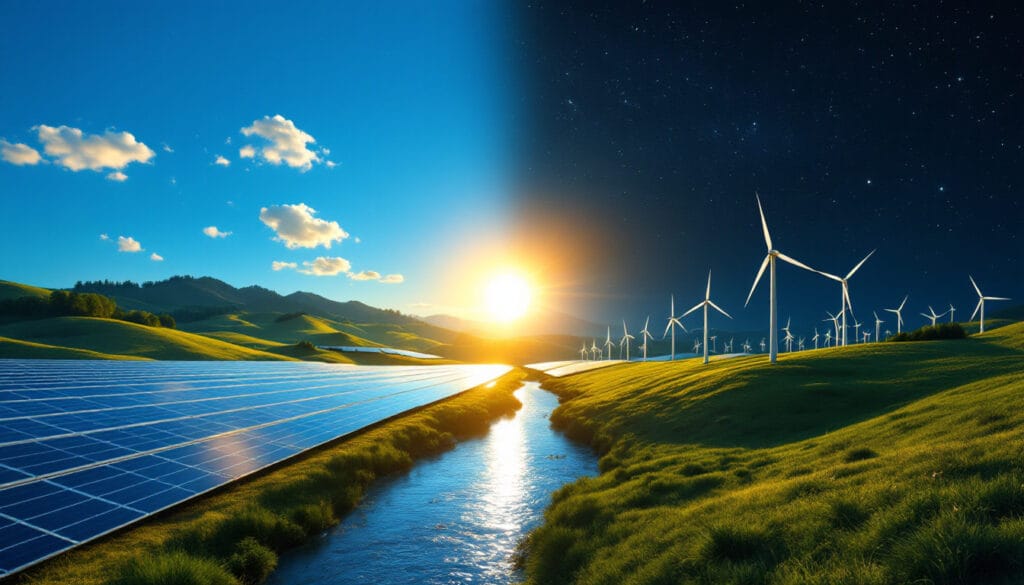Imagine a world where every energy gesture counts, where every kWh must be rigorously calculated and understood to minimize our impact on the planet. The primary energy consumption plunges us into the heart of this challenge. It corresponds to the amount of energy present in nature before any transformation by mankind. Every time we heat our homes, turn on lights, or produce hot water, we use this energy available in its raw form. Understanding this concept is essential to assess the degree of energy independence and the sustainability of our consumption systems. With this data, we can evaluate the efficiency of our equipment by integrating all energy expenditures, whether for cooling, heating, or even ventilation. By looking at this dimension, we better grasp how each unit of final energy at our disposal results from a complex process.
The primary energy consumption is an essential concept for understanding the energy balance of a nation. It refers to all the raw energy available in nature before any form of transformation or use by mankind. This raw energy encompasses sources such as wood, oil, natural gas, and uranium, which are extracted directly from the Earth.
The source of these energies is considered in their initial state, before going through conversion processes to become usable forms like electricity or fuel. Thus, primary energy consumption plays a crucial role in the analysis of a country’s energy balance by assessing its capacity to meet its energy needs independently.
The measurement of this consumption allows us to calculate a country’s energy independence rate, a strategic data point that indicates the extent to which the nation can cover its needs with its own energy resources. This rate is all the more important as it influences the country’s energy policy, particularly the necessity to import foreign energies or, conversely, the ability to export local energy forms.
Understanding primary energy consumption is also crucial within the framework of the Energy Performance Diagnostic (DPE). Here, it includes all the energies necessary for the operation of a dwelling’s equipment, such as heating, cooling, the production of domestic hot water, lighting, and ventilation aids. The primary energy coefficient (CEP) is then used to evaluate the energy compliance of constructions.
Primary energy must still be distinguished from final energy and useful energy. While primary energy refers to that available in its raw state, final energy is the energy transformed and ready for use by the consumer, such as electricity at the outlet or gas for cooking. Lastly, useful energy is the portion of final energy that is actually used for the required needs after losses during its practical use.
Knowing the nuances between these different energy stages is crucial for modern approaches, such as energy self-consumption, a gesture for the environment. New energy technologies seek to minimize these energy losses, making primary energy more efficient through innovations like cogeneration.
It is essential to study the economic and ecological impacts of primary energy consumption. In 2023, the search for renewable solutions and resource optimization have achieved record levels in terms of clean energy consumption. These results are a response to an increasing demand for less polluting energies and a collective desire to reduce dependence on fossil fuels, contributing to what the consumption of renewable energy reaches historic highs.
For all these reasons, understanding the dynamics of primary energy consumption is crucial not only for policymakers but also for investors and everyone engaged in the energy transition. It is an indispensable lever for guiding our energy future towards a more sustainable and environmentally respectful model.

Understanding Primary Energy Consumption
Q: What is primary energy?
A: Primary energy is the energy available in nature before any human transformation. It includes resources like wood, oil, and natural gas.
Q: How is primary energy consumption calculated?
A: Primary energy consumption encompasses all the energies used for a unit of final energy, including heating, cooling, hot water production, and lighting. It adds up the energy consumed at use with the energy necessary to produce it.
Q: What is the difference between primary energy and final energy?
A: Primary energy is that initially available in nature, while final energy is that actually consumed by the user after transformation, for example, electricity in our homes.
Q: Why is primary energy consumption important?
A: It allows measuring a country’s energy independence rate and determining its ability to meet its needs without heavily relying on imports.
Q: What are the main uses covered by primary energy consumption?
A: The main consumptions include heating, production of domestic hot water, ventilation, and lighting of buildings.
Articles similaires
Thank you!
We will contact you soon.













